Considering Invisalign as an investment in your smile can sometimes make you ponder, “Is the cost really worth it?” As a dentist offering Invisalign services, I’ve seen firsthand the transformative power these aligners have on my patients’ lives. Not just aesthetically, but also in boosting their confidence.
The cost of Invisalign might seem like a significant upfront investment, but when weighed against its numerous benefits, including its virtually invisible appearance and effectiveness, it becomes clear why so many choose Invisalign for their orthodontic needs.
The value of Invisalign goes beyond just straightening teeth. With the ability to remove the aligners, patients enjoy a level of convenience not available with traditional braces. They eat, brush, and floss without hindrances, leading to better oral hygiene throughout the treatment. Considering these advantages, Invisalign is not just an expense but an investment in dental health and quality of life. The decision ultimately comes down to personal priorities and values, but for those valuing aesthetics, comfort, and convenience, Invisalign often proves to be worth every penny.
Request a consultation today with Dr. Zoladz at Frankfort Smiles Dental if you are local to the Frankfort, IL area!
Introduction to Invisalign Aligners

Invisalign aligners offer a modern way to straighten teeth without the brackets and wires of traditional braces. This system uses a series of clear, custom-fitted, at-home clear aligner trays that gently shift your teeth into their desired positions. Unlike braces, these aligners are almost invisible, giving adults and teens a discreet treatment option. The convenience of being able to remove the aligners for eating and oral care is a game-changer for many, making Invisalign a popular choice for those looking to improve their smile without compromising their lifestyle.
Understanding How Invisalign Works
Invisalign uses advanced 3D computer-imaging technology to project the desired movement of your teeth, from their current position to the final desired position. Then, based on these projections, a series of custom-made, clear aligners are produced specifically for your teeth. Each aligner makes slight adjustments to the tooth position, moving them closer to that perfect smile. You’ll wear each set of aligners for about two weeks before moving on to the next set in the series. With each progression, you’ll see your teeth gradually aligning, making Invisalign a series of treatment options that are not only effective but also highly predictable.
The Evolution and Technology Behind Invisalign
The technology and innovation behind Invisalign have significantly evolved since its introduction. From the initial concept of using clear aligners to straighten teeth discreetly, the process of providing Invisalign now incorporates state-of-the-art digital scanning and 3D printing technology. This advancement allows for precise customization of aligners, ensuring a snug fit and more effective treatment. The continual improvement in the materials used also means aligners are now more comfortable and efficient at moving teeth. This evolution underscores Invisalign’s commitment to offering an increasingly effective and user-friendly treatment option for patients worldwide.
Analyzing the Cost Factors of Invisalign
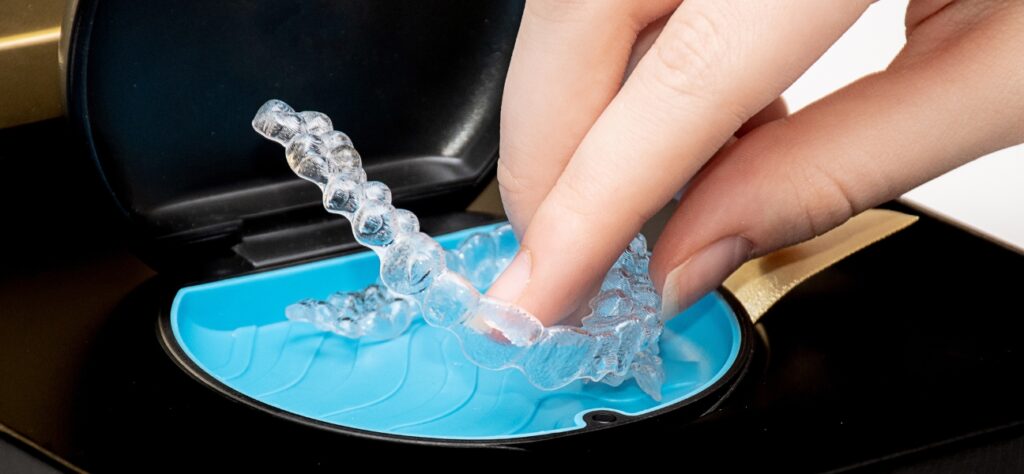
When considering Invisalign, it’s important to understand that several factors can influence the total cost. One key aspect is that aligners are removable, which contributes to their convenience but also affects the overall treatment plan and potentially its cost.
Average Cost of Invisalign Treatment in the United States
In the United States, the average cost of Invisalign treatment ranges significantly, often influenced by specific needs such as the complexity of dental issues, the number of aligners needed, and the duration of treatment. This cost generally includes all necessary office visits, any required Invisalign attachments, and follow-up appointments. While braces cost can sometimes be lower, the advantages offered by Invisalign, such as its invisibility and removability, contribute to its value. Additionally, most Invisalign providers offer consultations to discuss costs, treatment plans, and the potential need for clear aligners, providing a comprehensive understanding of the investment.
Factors That Influence the Final Price of Invisalign
The final price of Invisalign is significantly influenced by the number of Invisalign trays required for successful treatment. This varies from person to person, depending on the individual’s orthodontic needs.
Treatment Complexity
The complexity of a patient’s dental issues plays a crucial role in determining the cost of Invisalign treatment. More complex dental alignments or bite issues may require additional Invisalign trays and possibly longer treatment times, influencing the overall price. Each case is unique, and the specific needs dictate the extent of treatment and, consequently, the cost.
Treatment Duration
Treatment duration is closely tied to the complexity of the dental issues being addressed. More complex cases often require a longer treatment time, which can increase the overall cost. Regular office visits are necessary to monitor progress and make adjustments as needed, further emphasizing the importance of understanding the potential duration of your treatment plan.
Geographic Location
The cost of Invisalign can also vary depending on geographic location. This variation is partly due to differences in the cost of living and the operating expenses of dental practices in different areas. Higher costs of living in certain regions can translate into higher fees for dental services, including Invisalign treatment, making location a significant factor to consider when evaluating the cost.
Invisalign vs. Traditional Braces: A Cost Comparison
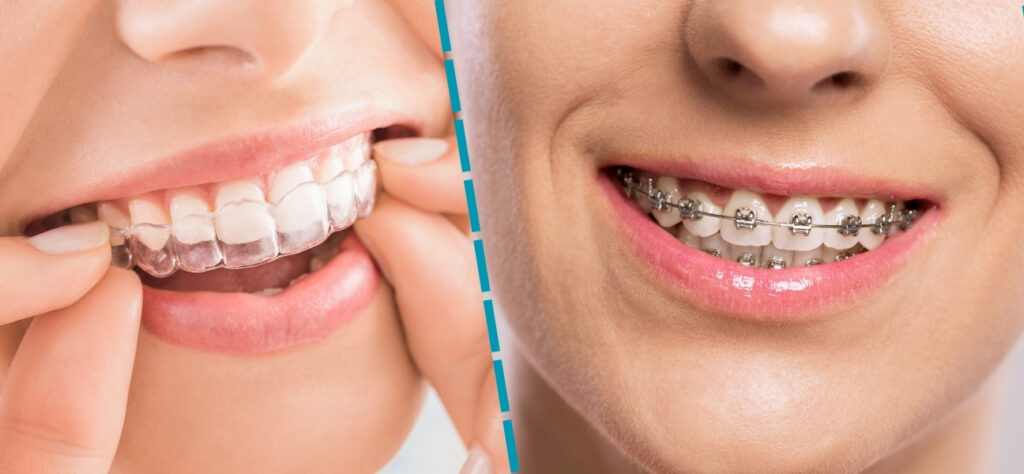
When comparing Invisalign to traditional braces, it’s essential to consider not only the actual cost but also the benefits and conveniences each option offers. While the initial investment in Invisalign might be higher, the advantages of a nearly invisible treatment, combined with the ease of maintaining oral hygiene, often justify the difference in price for many patients.
| Treatment | Average Cost | Treatment Duration | Aesthetic Appeal | Comfort | Maintenance |
| Invisalign | $3,000 – $8,000 | 12-18 months | Nearly invisible | More comfortable (no wires) | Removable for cleaning, easier |
| Traditional Braces | $2,500 – $6,000 | 18-24 months | Visible metal brackets | Less comfortable (wires, brackets) | Requires regular brushing around brackets |
Benefits of Choosing Invisalign Over Braces
The Invisalign system offers several benefits over traditional braces, including the aesthetics of clear aligners that are virtually invisible, the convenience of Invisalign Express for shorter treatment durations, and the ease of maintaining oral hygiene with simple brushing and flossing. Insurance verification is a crucial step as some policies may cover a portion of the treatment, affecting the actual cost to the patient. These benefits, combined with the tailored treatment duration and the comprehensive approach of the Invisalign system, make it an attractive option for those seeking discreet orthodontic treatment.
Financial Considerations Between the Two Options
Choosing between Invisalign and traditional braces involves several financial considerations. While the upfront cost of Invisalign may be higher, the long-term benefits, including potentially fewer dental visits and less need for post-treatment dental work due to better oral hygiene, can offset the initial investment. It’s important to evaluate both options’ total cost, including the treatment’s effectiveness and the convenience it offers, to make an informed decision.
Insurance and Financing Options for Invisalign

Many patients have access to insurance and flexible payment options that can help manage the cost of their Invisalign treatment. Exploring these options can significantly reduce the financial burden and make the treatment more accessible.
Does Insurance Cover Invisalign?
Insurance coverage for Invisalign varies by policy. Many dental insurance plans cover a portion of orthodontic treatments, including Invisalign, under their orthodontic care benefits. It’s crucial to “watch your smile” transform while also understanding how your dental insurance covers the treatment, potentially easing the financial investment required for a healthier, straighter smile.
Navigating HSA and FSA for Invisalign Payments
When it comes to affording Invisalign, Health Savings Accounts (HSAs) and Flexible Spending Accounts (FSAs) offer a tax-advantaged way to manage the costs. Understanding how to use these accounts can significantly ease the financial burden of achieving the perfect smile. Both HSAs and FSAs allow individuals to set aside money before taxes for medical expenses, including Invisalign treatment, making it an efficient way to save money while straightening teeth.
Understanding the Eligibility and Benefits
Eligibility for using HSA or FSA funds for Invisalign centers on whether it’s considered a qualified medical expense. Fortunately, Invisalign usually qualifies because it’s a form of orthodontic treatment. HSAs and FSAs not only reduce your taxable income but also ensure that you have a dedicated fund for health-related expenses. The benefit extends to covering a significant portion of the Invisalign treatment cost, making these accounts an excellent resource for prospective patients.
How to Use HSA/FSA for Invisalign
To use your HSA or FSA for Invisalign, start by confirming your plan’s coverage and rules with your insurance company. You’ll need to pay for your treatment upfront and seek reimbursement from your HSA or FSA by submitting an itemized receipt. Some providers may also allow direct payment from your account, simplifying the process. It’s essential to plan your contributions accordingly, especially with FSAs, since they have a use-it-or-lose-it policy within the calendar year.
Alternative Payment Solutions for Invisalign
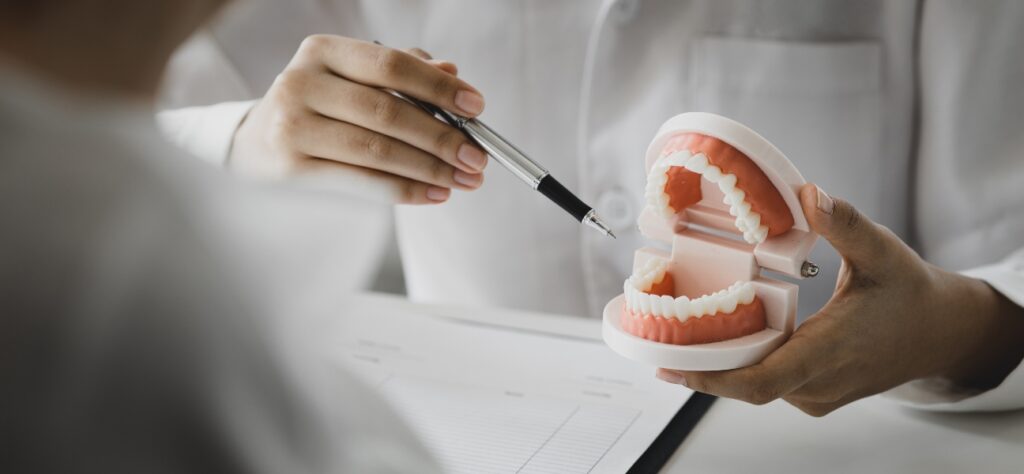
For those without insurance or looking for additional ways to manage Invisalign treatment costs, alternative payment solutions are available. Exploring these options can make the journey to straight teeth more accessible and less stressful financially.
Exploring Care Credit and Other Payment Plans
Care Credit, a healthcare credit card, offers financing options for Invisalign treatments, often with promotional interest-free periods. Additionally, many dental practices provide in-house payment plans, allowing patients to spread the cost over several months. These alternatives can be particularly helpful for managing the expenses without the full upfront cost, making Invisalign accessible to a wider audience.
Invisalign Cost Without Insurance
Opting for Invisalign without insurance requires careful financial planning. The cost varies widely, but understanding all available payment options is crucial.
Monthly Payment Plans
Many dental practices offer monthly payment plans to distribute the Invisalign treatment costs over time. These plans often require a down payment followed by fixed monthly payments. This method can significantly ease the financial load, allowing patients to gradually straighten their teeth without the stress of a lump sum expense.
Promotional Deals and Discounts
Some orthodontic offices provide promotional deals and discounts on Invisalign treatments during certain times of the year or to specific groups, such as new patients or families. It’s wise to inquire about any available promotions, as these can reduce the overall cost and make the investment in your smile more affordable.
Invisalign Treatment Process Explained
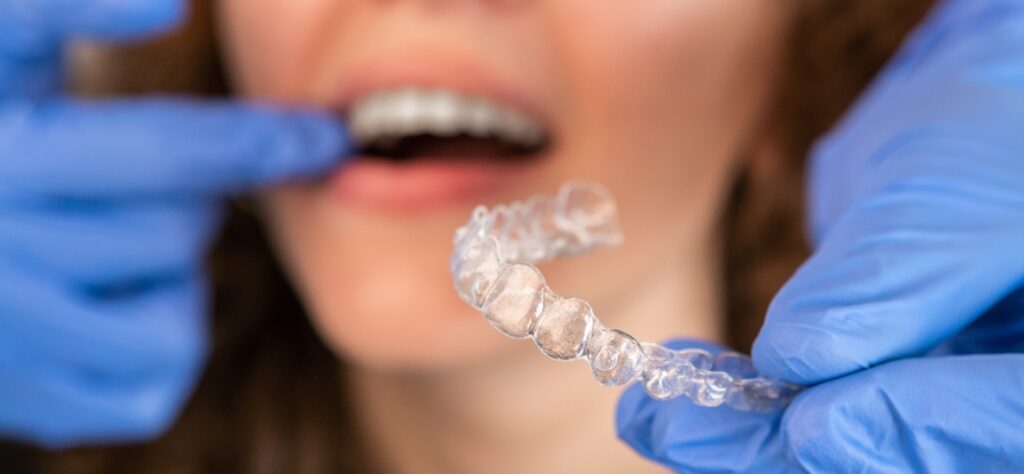
The Invisalign treatment process is a modern approach to teeth alignment, using custom-made aligner trays to gradually straighten your teeth. This innovative method provides a clear, comfortable, and convenient alternative to traditional braces, ensuring patients can achieve their dream smile with minimal disruption to their daily lives.
Initial Consultation to Final Smile
The first step towards a new smile is the initial consultation, where your dentist evaluates your teeth and discusses the treatment plan. Following this, custom aligners are created to fit your teeth perfectly. Throughout the treatment, you’ll change aligners every few weeks, slowly moving your teeth into the desired position. Regular check-ins with your dentist ensure progress is on track toward achieving your final smile.
Maintaining Your New Smile: Post-Treatment Care
After completing the Invisalign treatment, maintaining your new smile is crucial. Retainers may be necessary to ensure your teeth stay in their new positions. Following your dentist’s post-treatment care instructions will help protect the investment you’ve made in your smile, keeping it beautiful for years to come.
Hidden Costs of Invisalign Treatment

While Invisalign offers a less visible way to straighten teeth, it’s important to be aware of potential hidden costs. These can include replacement aligners, retainers, and additional dental work, which may influence the overall cost of your treatment. Understanding these potential expenses upfront can help you budget more effectively for your Invisalign journey.
Replacement Aligners and Retainers
If aligners or retainers are lost or damaged, replacements can be purchased. Opting for at-home clear aligner treatments may offer a cost-effective alternative, but it’s crucial to weigh the benefits and limitations. Always follow your treatment plan closely to minimize the need for replacements.
Additional Dental Work That May Affect Cost
Some patients may require additional dental work to address alignment issues before starting Invisalign. Experienced orthodontists and/or dentists can identify any prerequisites to ensure a smooth treatment process. These preparatory procedures, influenced by factors such as the cost of living and the complexity of dental issues, can affect the overall cost of your Invisalign journey.
Invisalign for Teens and Adults

Invisalign treatment caters to both teens and adults, offering a versatile solution for correcting moderate to severe dental misalignments. Invisalign Express, designed for minor adjustments, is an excellent option for those needing slight corrections. The custom aligner trays are virtually invisible, making them a popular choice among adults who may be self-conscious about traditional braces. Teens benefit from the flexibility of Invisalign, accommodating their active lifestyles and growing mouths, ensuring a seamless integration into their daily lives while working towards a perfect smile.
Tailoring the Treatment to Different Age Groups
The Invisalign system is adeptly tailored to fit the unique needs of different age groups. For adults, the focus often lies on correcting years of misalignment or enhancing previous orthodontic work, aiming for minimal disruption to their professional and social lives. Teens, on the other hand, might need special attention to accommodate ongoing dental development, with features like compliance indicators to monitor wear time. This thoughtful customization ensures each individual, regardless of age, receives the most effective and efficient treatment path to a beautiful smile.
Considerations and Adjustments in Treatment Plans
When planning Invisalign treatment, several adjustments and considerations ensure a fit tailored to individual needs. Beyond the initial choice between Invisalign and ceramic braces for those seeking less visible options, the intricacies of each case—such as the severity of dental issues and the desired timeline for results—are meticulously evaluated. Invisalign clear aligners offer a flexible, customizable approach, allowing for adjustments throughout the treatment to address shifting dental needs, ensuring the journey to a perfect smile is as smooth and efficient as possible.
Saving Money on Invisalign Treatment

While investing in Invisalign clear aligners is a decision that pays dividends in confidence and dental health, there are ways to make it more affordable. Selecting a dentist or orthodontist who offers payment plans can spread the cost over time. Additionally, exploring Invisalign alternatives with your provider can reveal more budget-friendly treatment options that still meet your dental correction needs. It’s also wise to inquire about package deals or promotions, as some practices might offer discounts on comprehensive treatment plans.
Cost-Effective Tips and Alternatives
To reduce the financial burden of Invisalign treatment, consider several cost-effective strategies. You can also inquire about any available discounts, such as those for upfront payments, or explore dental insurance plans that cover a portion of orthodontic treatments, making your path to a perfect smile more accessible.
Advancements in Invisalign Technology
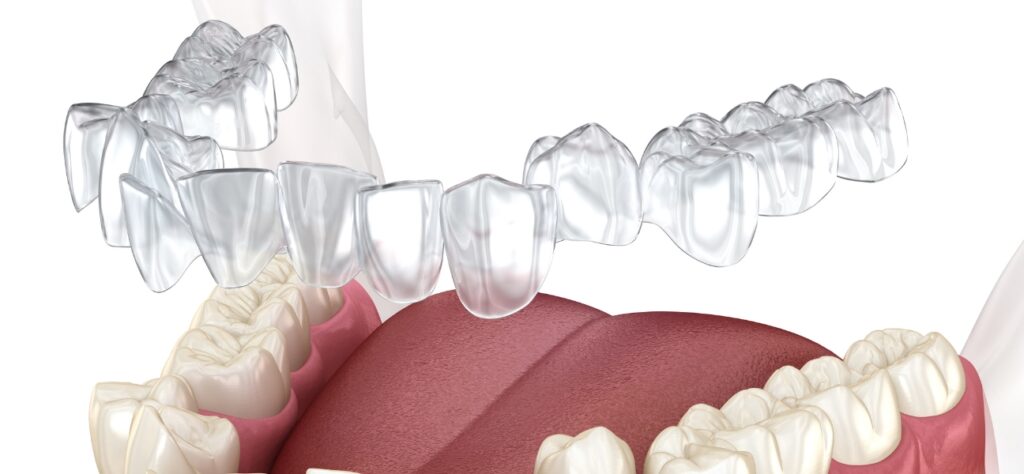
The landscape of Invisalign treatment is continually evolving, with technological advancements enhancing patient experiences and outcomes. Providers now have access to more precise and efficient tools for treatment planning, including digital scanning and 3D printing, ensuring a customized fit and effective alignment process. These innovations not only improve the accuracy of treatments but also reduce the overall treatment time, making the journey to a perfect smile faster and more comfortable for patients.
Exclusive Invisalign Features and Benefits
Invisalign clear aligners are crafted from SmartTrack material, designed specifically for comfort and efficiency in moving teeth. This innovation, along with features aimed at treating a wide range of cases from simple to complex, highlights the benefits of Invisalign. Patients often experience less jaw pain compared to traditional braces, thanks to the gentle, continuous pressure applied by the aligners. These benefits underscore why Invisalign remains a popular choice for those seeking a discreet, effective solution to achieve their ideal smile.
Future Innovations in Clear Aligner Therapy
The future of clear aligner therapy promises exciting innovations, with at-home clear aligner options expanding access and convenience for patients. New aligner brands are entering the market, offering features that cater to specific dental needs, including solutions for periodontal disease. As technology advances, we can anticipate more personalized treatment plans that efficiently cover the cost and care of patients’ teeth and gums, further enhancing the appeal and effectiveness of clear aligner therapy as a preferred option for orthodontic treatment.
Conclusion: Embracing Your Journey to a Perfect Smile

Investing in Invisalign is not merely a financial decision; it’s a step toward gaining confidence with every smile. Aligner therapy, a cornerstone of modern orthodontic treatment, offers a seamless path to straightening teeth without the conspicuousness of traditional braces. For those on the fence about the cost, consider the long-term benefits of a healthier, more beautiful smile. It’s an investment in yourself that pays dividends in self-esteem and oral health.
Final Thoughts on Investing in Invisalign
The journey to a perfect smile with Invisalign is a worthwhile investment for those seeking a discreet, effective solution to crooked teeth. While the initial cost may seem daunting, the value of aligner therapy extends beyond aesthetics to include improved oral hygiene and a customized treatment plan tailored to your unique needs. With flexible payment options and insurance coverage possibilities, Invisalign proves to be an accessible solution for those dreaming of a straighter smile.
How To Ensure a Successful Invisalign Treatment Outcome
Ensuring a successful outcome from your Invisalign treatment involves a commitment to the treatment process, especially in complex cases. Adhering to wearing the aligners for the recommended 20 to 22 hours a day and following your dentist or orthodontist’s instructions for care and maintenance can significantly influence the effectiveness of the treatment. Regular check-ups are essential to monitor progress and make adjustments as needed, guaranteeing that your journey to straighter teeth is as smooth and efficient as possible.
Frequently Asked Questions About Invisalign

A perfect smile with Invisalign clear aligners often brings up many questions. From understanding the treatment process to managing expectations about results, patients seek clarity on how Invisalign can transform their smiles. Addressing these inquiries is essential in ensuring patients feel confident and informed throughout their orthodontic journey.
One of the frequently asked questions involves the duration and comfort of wearing Invisalign aligners, highlighting patient concerns about integrating treatment into their daily lives.
Q: Can Dental Restorations Affect Invisalign Treatment?
A: Dental restorations, such as crowns or bridges, can indeed influence the course of Invisalign treatment. These restorations may not adhere to the aligners as natural teeth would, potentially requiring additional adjustments or accommodations. However, an experienced provider can navigate these complexities, ensuring restorations complement the treatment plan rather than complicate it, guiding patients smoothly toward their goal of a well-aligned smile.
Q: How much does Invisalign cost on average?
A: The average cost of Invisalign® typically ranges from $3,000 to $8,000, depending on various factors like the complexity of the case and the length of treatment.
Q: What factors influence the cost of Invisalign treatment?
A: Factors that influence the cost include the severity of the orthodontic issues, the length of treatment, the geographic location of the provider, and whether or not the patient is a candidate for Invisalign.
Q: Will dental insurance cover the cost of Invisalign?
A: Many dental insurance plans cover Invisalign treatment, but coverage varies. It’s essential to check with your insurance provider to determine how much they may pay for Invisalign treatment.
Q: Is Invisalign more affordable than traditional metal braces?
A: In many cases, the cost of Invisalign can be similar to or possibly higher than the cost of metal braces. However, the convenience and aesthetic appeal of clear aligners may justify the investment for some patients.
Q: What can I do to make Invisalign more affordable?
A: To make Invisalign treatment more affordable, consider discussing payment plans with your orthodontist or dentist, utilizing dental insurance benefits, or checking if your provider offers financing options.
Q: How long does the treatment typically take with Invisalign?
A: The length of treatment with Invisalign varies, but it generally takes about 12 to 18 months. Some cases may take longer, while others may be completed in as little as six months.
Q: How many hours a day do I need to wear my Invisalign aligners?
A: For optimal results, you should wear your Invisalign aligners for 20 to 22 hours per day, only removing them for eating, drinking, brushing, and flossing.
Q: Are there any financing options available for paying for Invisalign?
A: Many orthodontic practices or dentists offer financing options that allow you to break down the cost of Invisalign treatment into manageable monthly payments. It’s best to inquire directly with your provider about available plans.
Q: Can I get a free consultation to discuss the cost of Invisalign?
A: Yes, many orthodontists and dentists offer free consultations to evaluate your case and provide an estimate of the cost of treatment, including whether you are a suitable candidate for Invisalign.


